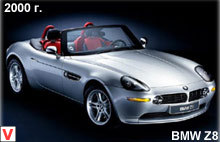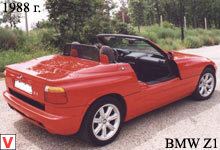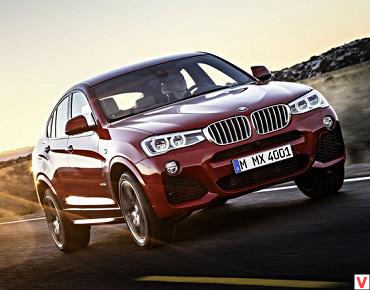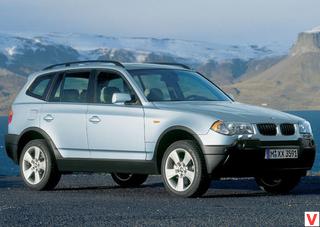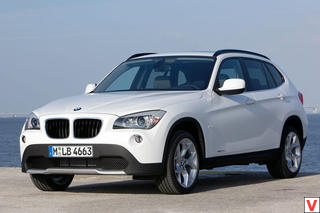
In September 1983, at the Frankfurt Motor Show, BMW unveiled the top model from the Motorsport GmbH division - the M635 CSi. The car had an E24 body and a powerful high-speed 6-cylinder M88 / 3 engine with a capacity of 3453 cm³ and a power of 286 hp, which allowed it to reach speeds of up to 255 km / h. The car accelerated from 0 to 100 km / h in 6.5 seconds. Initially, this power unit was equipped with a sports car M1. Of course, we had to make some changes to the motor, for example, we worked on cooling and lubrication systems.
All the coolant paths and the intake manifold were reworked to accommodate the engine under a 30-degree slope in the engine compartment of the M635 CSi, in contrast to the M1, where the power unit was located vertically. The dry-crankcase lubrication system used on the M1 was replaced by a conventional one, as on the standard 635 CSi model. Externally, the model M635 CSi practically did not differ from the standard 635 CSi. The front spoiler was a little lower, and the arches of the wings a little wider. The exterior is complemented by 16-inch collapsible BBS discs and a slightly modified front skirt with a ribbed hem along the bottom.
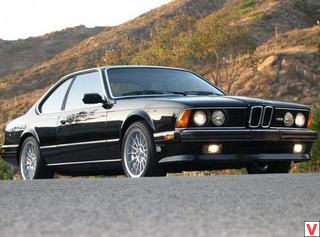
Also, it is worth noting a small aerodynamic wing on the driver's janitor. The three-spoke sports steering wheel was mounted normally, but the Recaro sports seats were an option. The front brakes received increased (300 mm x 30 mm) ventilated discs with 4-piston ATE calipers. The rear brakes were essentially the same as the standard 635 CSi, but the calipers had pistons increased by 2 mm. The suspension was fitted with 10 mm lower and 15% stiffer springs, accompanied with gas shock absorbers specially designed by Bilstein on all four wheels.
Also, more powerful stabilizers were placed on the car. Since 1987, the M635 CSi has been shipped to the United States, where it received a short designation - M6. The engine on the M6 was equipped with a catalytic converter and had a reduced compression ratio, with the result that its power was only 256 horsepower. Simultaneously with the start of deliveries to the American market, the M88 index of the engine was replaced by S38, highlighting the power unit belonging to the BMW Motorsport GmbH division by S. In April 1989, the last M635 CSi (M6) of the first generation rolled off the assembly line. After a long break, in 2005, the M6 returned.
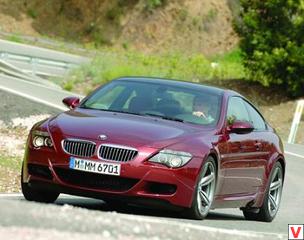
The second generation coupe with all its appearance emphasizes belonging to a tribe of supercars. Exterior has similarities with the 6th series. But the emku is distinguished by enlarged air intakes, other side mirrors, a modified form of the front-end sidewalls and twin tailpipes of rear silencers.
Most of all, the supercar's essence of the model comes from huge 19-inch wheels that can accommodate ventilated diameter brake discs: 348 mm in front and 345 in the rear. Especially for the M6, 4 unique body colors are offered: Indianapolis Red, Sepang Bronze, Interlagos Blue and Silverstone Silver. Salon meets sports leather seats with lumbar support and electric adjustments. The luxurious leather upholstery of the front panel is successfully combined with carbon fiber inserts. The ceiling trimmed with dark suede complements the picture, as well as the unchanged iDrive with a large LCD display and controller.
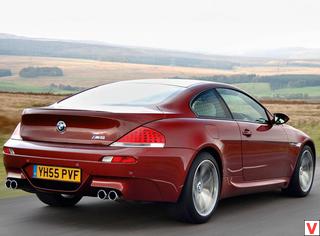
On the lower needle of the steering wheel, on the thresholds, on the dial of the tachometer, and even on the platform for the rest of the left foot, the M. Designing a car, BMW experts struggled with obesity. Body parts are made of lightweight materials. The doors are made of aluminum, the front wings are plastic, and the roof is carbon. Carbon is very expensive, but it is stronger and almost twice lighter than aluminum. As a result, the M6 weighs only 1,710 kg. The model was equipped with a powerful five-liter aluminum-silicon V10 engine, developing 507 hp. at 7750 rpm From 0 to 100 km / h the car accelerates in 4.6 seconds.
The speedometer is marked up to 330 km / h and shows the true potential of the M6, although the maximum speed is electronically limited to 250 km / h. It is noteworthy that this power unit is one of the most complex in its electronics. The engine control unit MS S65 consists of three 32-bit processors that coordinate more than 200 million operations per second, processing data from 50 sources. The Power button is located on the center console of the BMW M6. The “default” setting turns on the P400, in which the engine does not operate at full power, but using only 400 hp. If the Power button is pressed, the setting changes to the P500 and all 507 hp are used.
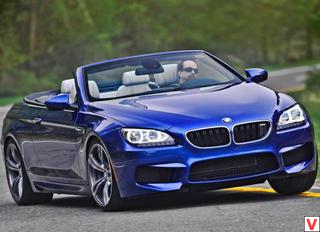
The BMW M6 has a 7-speed, third-generation Sequential Manual Gearbox (SMG) transmission with a Drivelogic system that offers a choice of 11 modes of operation. Six of these options are designed for mechanical mode and five - for the "machine". The suspension is based on the “standard” geometry of the BMW 645Ci. The double spring of the front axle, as well as the rear axle, is made entirely of aluminum. The standard equipment offers an electronic system for regulating the stiffness of shock absorbers (Electronic Damper Control). The driver of the BMW M6 can optionally choose one of the suspension settings - Comfort, Normal or Sport.
In 2012, one year after the premiere of the new BMW 6-series, the German automaker officially presented the “charged” version of the “six” with the M label, at the same time in both the Coupe (F12) and the open Convertible (F13). Compared with the previous generation, it has grown significantly in size. The BMW Coupe F13 is 4898 mm in length, 1899 mm in width and 1374 in height, against 4871 mm, 1855 mm and 1372 mm in the predecessor E63. The F12 cabriolet also became a bit more than its predecessor, but slightly lacked growth: 4898 mm in length, 1899 mm in width, 1368 mm, height compared to 4871 mm, 1855 mm and 1377 mm.
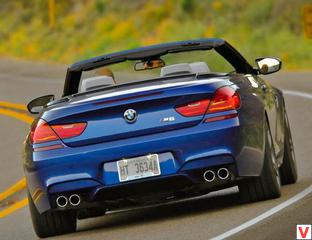
The new car got from the usual coupe of the sixth series a stylish and elegant, one might even say - elegant design. Unless, aerodynamic details were added to it, which made the car look even more aggressive. The dominant air intakes, a modified radiator grille with the M6 nameplate, new bumpers, extended wheel arches, ventilation slots in the front fenders and four sport exhaust pipes contribute to the creation of a dynamic look.
The base has 19-inch wheels, “shod” in tires with dimensions of 265 / 40R19 in front and 295 / 35R19 - in the rear. Optionally available and 20-inch wheels. With the latest, powerful carbon-ceramic brakes can also be ordered. The new salon turned out quite luxurious. Almost all elements of the cabin are dressed in natural leather.
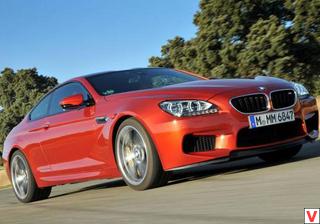
Especially for the new M6 sports seats have been developed. The interior is dominated by elements of carbon and wood, replacing the chrome and anodized elements. The interior also received a new steering wheel with shift paddles, a modified dashboard and door sills with podstvetkoy. For extra charge available heated steering wheel, full-time navigation system and Bang & Olufsen audio system. In addition, the car can be equipped with a night-vision system with pedestrian recognition, a tracking system for marking, a rear-view camera, as well as an infotainment system with Internet access. The car is driven by a 4.4-liter twin-turbo V8 engine, which is installed on the BMW M5 2012.
The engine produces 560 hp. and 680 Nm of torque at the peak, which is transmitted to the wheels through a seven-speed M-DCT transmission and distributed between the wheels of the rear axle via an active differential. From zero to hundreds, the new BMW M6 Coupe accelerates in 4.2 seconds, while a convertible takes 0.1 seconds more.
The maximum speed of both is electronically limited to 250 km / h, but the order of the M Driver's Package allows you to increase the maximum speed to 305 km / h. Despite the fact that the old-generation BMW M6 is equipped with a V10 engine, this car is 10% more powerful. BMW managed to make this car even more economical, the average consumption of the coupe in the combined cycle is 9.9 liters per hundred kilometers, and the consumption of a convertible is 10.3 liters per hundred. Last but not least, this was achieved thanks to the work to reduce the mass of cars. For example, the roof of the BMW M6 2012 coupe is made of carbon fiber, while the doors and hood are made of aluminum.
